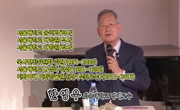선비 연구는 대부분 중국 학자들이 수행하였고, 일부 국내 학자와 러시아 학자가 참여하였다. 주제로는 선비 역사, 유적, 마구, 유물 비교 등이 있는데, 유물에 반영된 모티프 관련 연구로는 ...
http://chineseinput.net/에서 pinyin(병음)방식으로 중국어를 변환할 수 있습니다.
변환된 중국어를 복사하여 사용하시면 됩니다.
- 中文 을 입력하시려면 zhongwen을 입력하시고 space를누르시면됩니다.
- 北京 을 입력하시려면 beijing을 입력하시고 space를 누르시면 됩니다.
古墳 出土 遺物에 反映된 拓跋·慕容 鮮卑의 自然 모티프 分析 = Analysis of Natural Motifs Reflected in the Artifacts from Burials of Tuoba and Murong Xianbei
한글로보기https://www.riss.kr/link?id=T15467359
- 저자
-
발행사항
서울 : 한국전통문화대학교 일반대학원, 2020
-
학위논문사항
학위논문(석사)-- 한국전통문화대학교 일반대학원 : 문화유산융합학과 고고학 전공 2020. 2
-
발행연도
2020
-
작성언어
한국어
- 주제어
-
발행국(도시)
충청남도
-
형태사항
206 ; 26 cm
-
일반주기명
지도교수: 정석배
-
UCI식별코드
I804:44031-200000293340
- 소장기관
-
0
상세조회 -
0
다운로드
부가정보
국문 초록 (Abstract)
선비 연구는 대부분 중국 학자들이 수행하였고, 일부 국내 학자와 러시아 학자가 참여하였다. 주제로는 선비 역사, 유적, 마구, 유물 비교 등이 있는데, 유물에 반영된 모티프 관련 연구로는 선비의 동물상 문양을 대상으로 한 것, 흉노 동물상 문양과의 비교 등이 있다. 필자는 본고에서 자연 모티프 전체, 특히 선비 부장품에서 볼 수 있는 자연 모티프에 치중하였다.
자연은 모든 문화에서 큰 역할을 해 왔다. 즉, 원시 종교의 모든 사상은 자연을 바탕으로 세상 구조를 설명하려 하였다. 예컨대 샤머니즘, 애니미즘, 토테미즘에 그러한 경향이 있고, 유목민들은 자연에 더 의지하므로 정신문화의 영향을 더 많이 받았다고 할 수 있다. 정착민이 자연을 자신의 인생에 적응시킨 반면에, 유목민은 본인 스스로 자연에 적응하였다.따라서 선비의 정신문화와 일상생활 등을 세부적으로 파악하기 위해서 출토유물에 나타난 자연 모티프를 참고하는 것은 타당하다.
선비 매장문화의 종합은 아직까지 이루어지지 않았다. 또 유목민은 여기저기 이동하면서 다양한 지역의 토착 문화를 받아들이고 독특한 자기 문화 요소에 흡수시켰다. 때문에 선비 유적인지 선비 영향을 받은 다른 민족의 유적인지를 구별하기 어렵다. 하지만 기하학 문양이 아닌 특이한 자연 모티프를 추출하면 선비만의 요소를 분리하는 것이 가능하고 이를 통해 유적의 민족적 속성도 파악할 수 있다.
따라서 본고에서 선비 고분들에서 나타나는 자연 모티프를 살펴보았다. 우선 해당 유물이 출토된 고분들을 소개하고, 자연 모티프를 설명하였다. 자연 모티프는 생물과 무생물로 구분하고 생물은 동식물 형상으로, 무생물은 지형과 천체 형상으로 구성되었다. 모티프를 소개한 후 탁발씨와 모용씨 선비를 시공간적으로 비교하였다. 공통점과 차이점은 필자가 만든 표에 정리하여 제시하였다.
다국어 초록 (Multilingual Abstract)
While most researches on Xianbei are carried out by Chinese scholars, some studies are as well made by Korean and Russian scholars. Usually, subjects of such studies are Xianbei’s history, description of sites, horse trappings and weapons, comparati...
While most researches on Xianbei are carried out by Chinese scholars, some studies are as well made by Korean and Russian scholars. Usually, subjects of such studies are Xianbei’s history, description of sites, horse trappings and weapons, comparative analysis of some artifacts and others. As for the motifs reflected in the artifacts, there are some papers on Xianbei’s faunistic ornaments and comparison with Scythian and Xiongnu’s “animal style”. Present work is devoted to natural motifs in Xianbei’s burial culture, especially those reflected in tomb furnishings.
Nature plays an important role in every culture as primitive religions, such as shamanism, animism, totemism etc., give explanation of world’s structure by using characters and phenomena have been seen in nature. Nomads depend on natural environment more than settlers which leads to the fact that their spiritual culture and philosophy have more close connection with components of nature. While settlers adopt and change surrounding environment to their needs, nomads adopt to it by changing their habits, which means they consider nature to hold high status in spiritual and moral way. Therefore, reference to the natural motifs in Xianbei’s relics founded in burials seems appropriate in order to obtain more details on their spiritual culture as well as on daily life.
Besides thus far Xianbei’s burial complex has not been specified. In addition, due to frequent moves, nomadic Xianbei had adopted elements from local cultures on their way and assimilated with their own culture, and hence it is rather difficult to determine which burials belong to Xianbei and which do not. Nevertheless, it might be possible to differentiate ethnic identity of the buried by close study on more complex and containing profound meaning natural motifs than relying on relatively universal geometric ornaments.
The author of current research examines natural motifs in Xianbei’s relics from burials in order to broaden information on their spiritual culture and to define their burial complex in more details. First, burials in which such motifs were detected and natural motifs are briefly presented. In present work motifs are divided into organisms, such as animals and plants, and inanimate nature, such as relief and celestial bodies. Then considering division of Xianbei into different clans, spatio-temporal variability of the motifs is compared based on two main families – Tuoba and Murong, meaning that common and different characteristics are defined and analysed. Also results are designed in brief form into tables for the more convenient comparison.
목차 (Table of Contents)
- I. 머리말 1
- 1. 연구 목적 및 대상 1
- 2. 연구 과정 단계 3
- 3. 선비 개요 및 연구배경 3
- II. 유적과 유물 11
- I. 머리말 1
- 1. 연구 목적 및 대상 1
- 2. 연구 과정 단계 3
- 3. 선비 개요 및 연구배경 3
- II. 유적과 유물 11
- 1. 탁발씨 유적 11
- 2. 모용씨 유적 46
- III. 자연 모티프 분석 78
- 1. 생물 78
- 2. 무생물 171
- IV. 탁발씨와 모용씨의 자연 모티프 비교 183
- V. 맺음말 194
- 참고문헌 197
- Abstract 204
- 부 록 206












